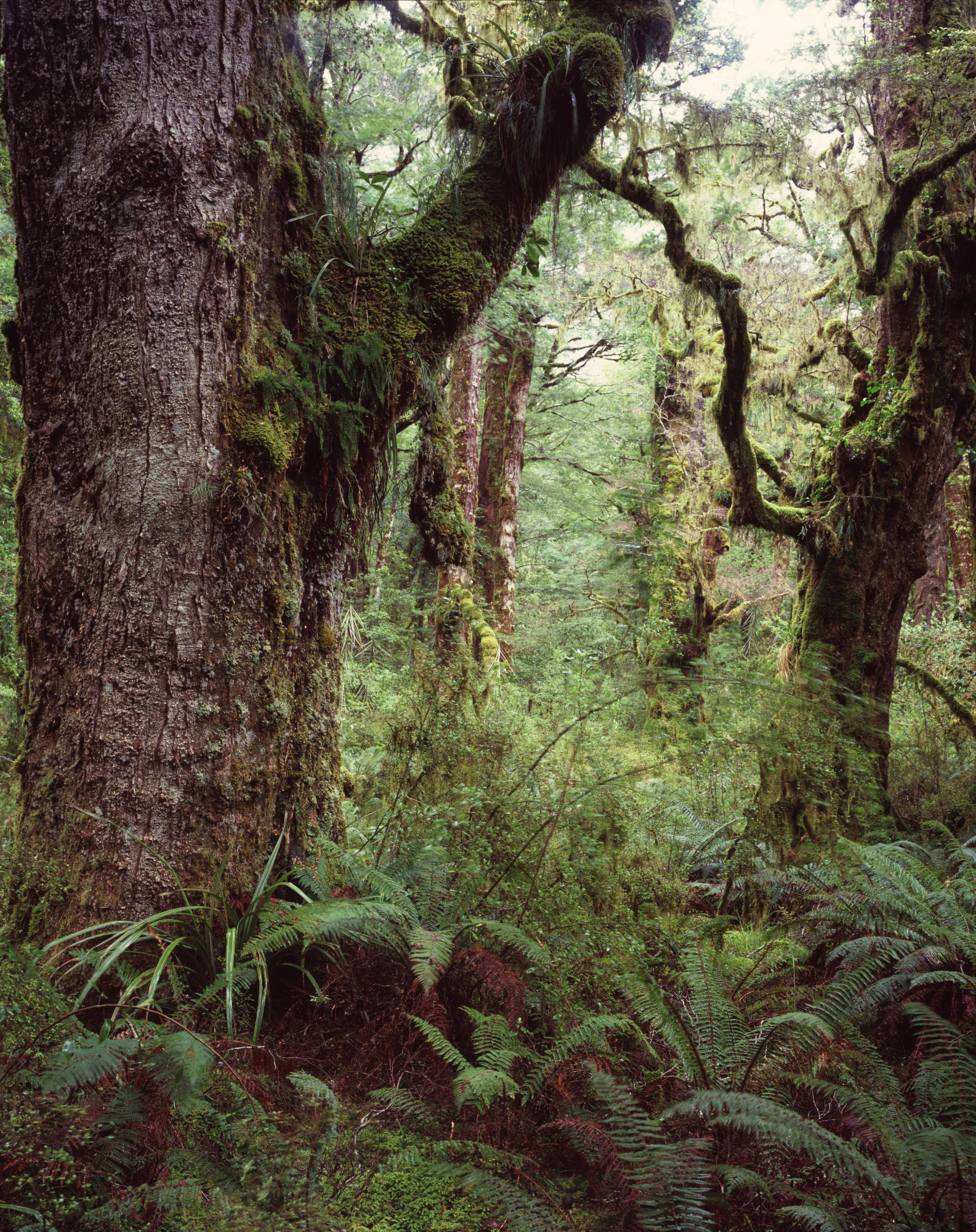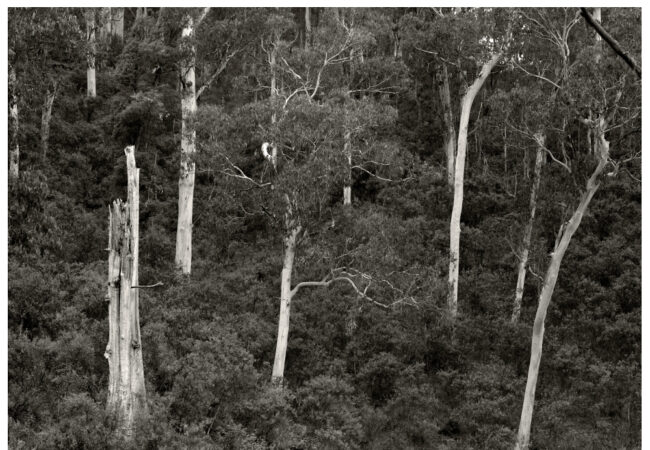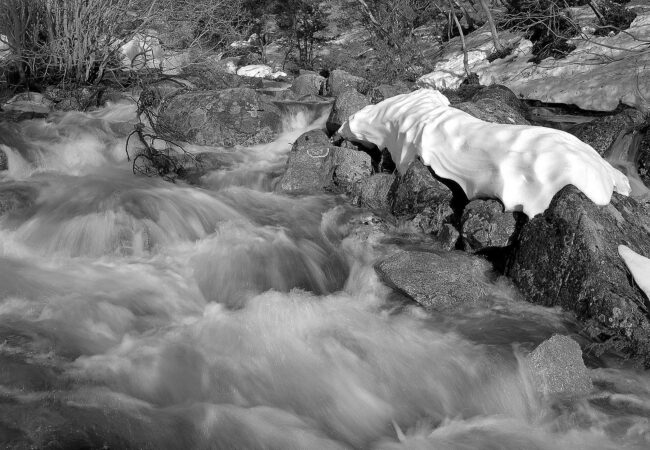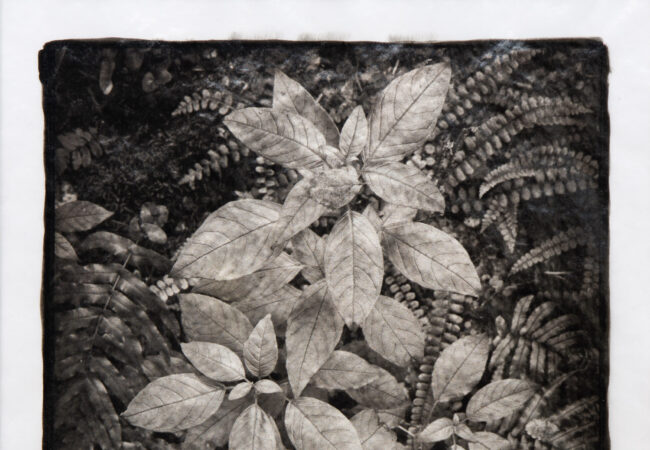View Camera Australia's seventh online exhibition features the work of:…

The Photograph Considered number six – Mark Darragh
Red Beech – Fiordland National Park, New Zealand.
The expression, “The Art of Suffering” is often applied to mountaineering but I think an equally valid claim could be made to that title by Large Format wilderness photographers.
Carrying heavy loads into remote places, often in “interesting” weather, only to emerge with a handful of photographs (if you are fortunate) is enough for most people to question your sanity.
For the last twenty odd years, much of my photography has centered on cool temperate forests and alpine ecosystems. That interest has taken me to cloud forest in the highlands of Southeast Asia through to the Patagonian Ice Cap in South America. It is a great privilege and immensely rewarding to visit these wild places. If I have the opportunity to take a photograph or two, that is often a bonus.
Photographic inspiration comes from being immersed in the landscape, at times quite literally. Patience and endurance are essential, but also the willingness to let go of your expectations and be receptive to the light and landscape around you.
All of this partly goes to explain how I came to be standing, soaked to the skin, surrounded by a most impressive grove of Red Beech (Nothofagus fusca) in the forests of Fiordland, New Zealand
Unseasonal heavy snow and gale-force winds had closed mountain passes and walking tracks across Fiordland. Our original plans were turned upside down and it was quite by accident that we found ourselves walking through this magnificent, and largely untracked, area of forest. Although they don’t reach the height or girth of the better know Kauri trees, Red Beech are the largest of the four species of southern Beech native to New Zealand. However, what they lack in size, they more than make up for in their remarkable presence or “Mana” as they might say in New Zealand.
Photographing in dense forest often presents challenges, particularly when shooting transparency film with its limited latitude. In this instance, with storm clouds rolling overhead, contrast certainly wasn’t an issue. The second challenge, creating a clear, simple composition was not so easily solved. Undulating terrain and lush undergrowth were hard enough to walk through let alone photograph. The human eye can comprehend the complex and at times chaotic nature of dense forest but capturing that in a meaningful way onto a two dimensional piece of film can be difficult. Eventually, after twenty minutes of stumbling and sliding, both camera and photographer were balanced precariously atop the remains of a log which was well on the way to complete disintegration. Combined with as much front-rise as I could get from the rather limited image circle of the lens, I had just enough height to clear most of the undergrowth.
Now having found a suitable composition, the malevolent forces of “Murphy” and “Huey” conspired and it began to rain heavily in a manner that befits an area which receives six or seven metres of precipitation a year. Rain dripped steadily off the trees overhead and on to an increasingly damp photographer, while my rain jacket was thrown over the camera to protect it from the deluge. In fact the rain never let up and in the end, more out of stubbornness and frustration than the hope of a successful photograph, I exposed two sheets. The film is decade old Fujichrome Velvia RVP 100 I was carrying to supplement a meagre supply of fresh RDP 100. An 81b filter was used to counter the heavy cloud and cold light.
The final images were a pleasant surprise when the film was processed. There were a few small rain spots on the filter, though nothing that detracts from the overall sharpness. RVP 100 isn’t normally my first choice of film in most situations but in this instance it has reproduced the subtle colour and lushness of the vegetation rather well. Out of the two, this sheet was the better result, movement has softened the low vegetation enough to allow the eye to move through the composition with less distraction.
As I write this, the whole future of large format transparency film seems to be clouded in uncertainty and speculation. It would be a great shame if this unique medium were to become yet another casualty of the so called “digital revolution”.
As for the trip we never finished, of course, the valley is still there and who knows what possibilities it contains? It certainly wont be a hardship to go back to revisit it.
Technical notes: Arca-Swiss Universalis 4×5 monorail camera, 125mm lens, Fujichrome Velvia RVP 100 4×5, 81B filter
Mark Darragh’s review of the Arca-Swiss Universalis 4×5 can be seen here.




Mark you have done well to capture this grove of beeches. It sounds like it was a challenge and a half.
Cheers Peter